Report bugs using Jira integration
Test Reporting & Analytics allows you to easily report and track bugs or issues in your test suite directly on Jira without navigating away from Test Reporting & Analytics.
Integrate Jira with Test Reporting & Analytics
Depending on your Jira instance type, choose the appropriate procedure for either:
- Jira On Cloud: For Jira instances hosted on the cloud.
- Self Hosted: For Jira instances hosted on your own servers.
Prerequisites
-
Ensure that you have an Atlassian user account.
-
BrowserStack Local Binary
This prerequisite applies only if your Jira is self-hosted and not publicly accessible. If your self-hosted Jira is publicly accessible, you can skip this step.
To successfully integrate BrowserStack with your Jira self-hosted instance, you need to set up the BrowserStack Local Binary. Follow these steps to ensure everything is correctly configured.
- Download the latest version of the BrowserStack Local Binary.
- Before running the binary, ensure the file has execute permissions:
chmod +x BrowserStackLocal
- To connect BrowserStack with your Jira self-hosted instance, use the following command:
./BrowserStackLocal --local-identifier integrations-repeater --only <jira-host-url-without-https>,<jira-port>,<ssl 0 or 1> --key <browserstackKey>
| Element | Description | Example |
|---|---|---|
<jira-host-url-without-https> |
Jira server URL (e.g., jira.mycompany.com). |
jira.mycompany.com |
<jira-port> |
The port number on which your Jira instance runs. Replace 8080 with your actual port. |
8080 |
<ssl> |
Indicates whether SSL is enabled (1 for HTTPS, 0 for HTTP). |
0 for HTTP or 1 for HTTPS |
<browserstackKey> |
Replace <browserstackKey> with your actual BrowserStack Access Key, which you can find in your BrowserStack account settings. |
abcd1234efgh5678 |
This will ensure that you have the necessary setup to connect their local environment to BrowserStack before proceeding with the integration steps.
Integrate Jira on cloud
To integrate Jira with Test Reporting & Analytics on cloud:
-
In the left navigation bar of Test Reporting & Analytics, click Integrations.
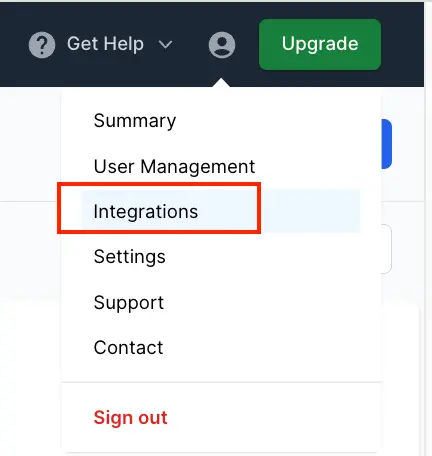
- On the Integrations page, click Connect under the Jira Software logo.
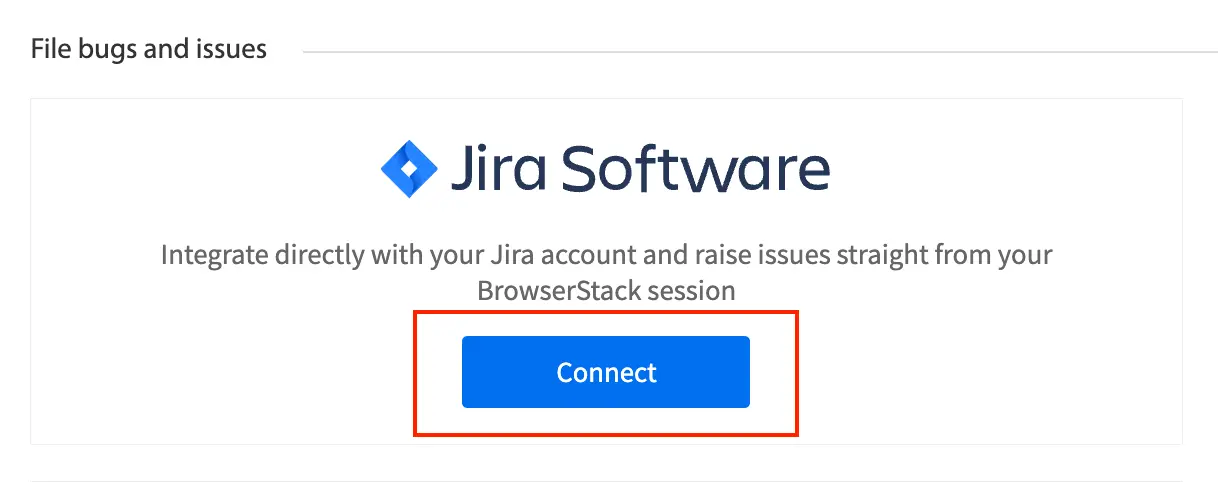
- On the Sign-in to Jira prompt, enter your credentials, including your Atlassian Hostname (
https://<company-name>.atlassian.net), Jira Email or Username, and API token or password. To generate an API token, click Get API Token.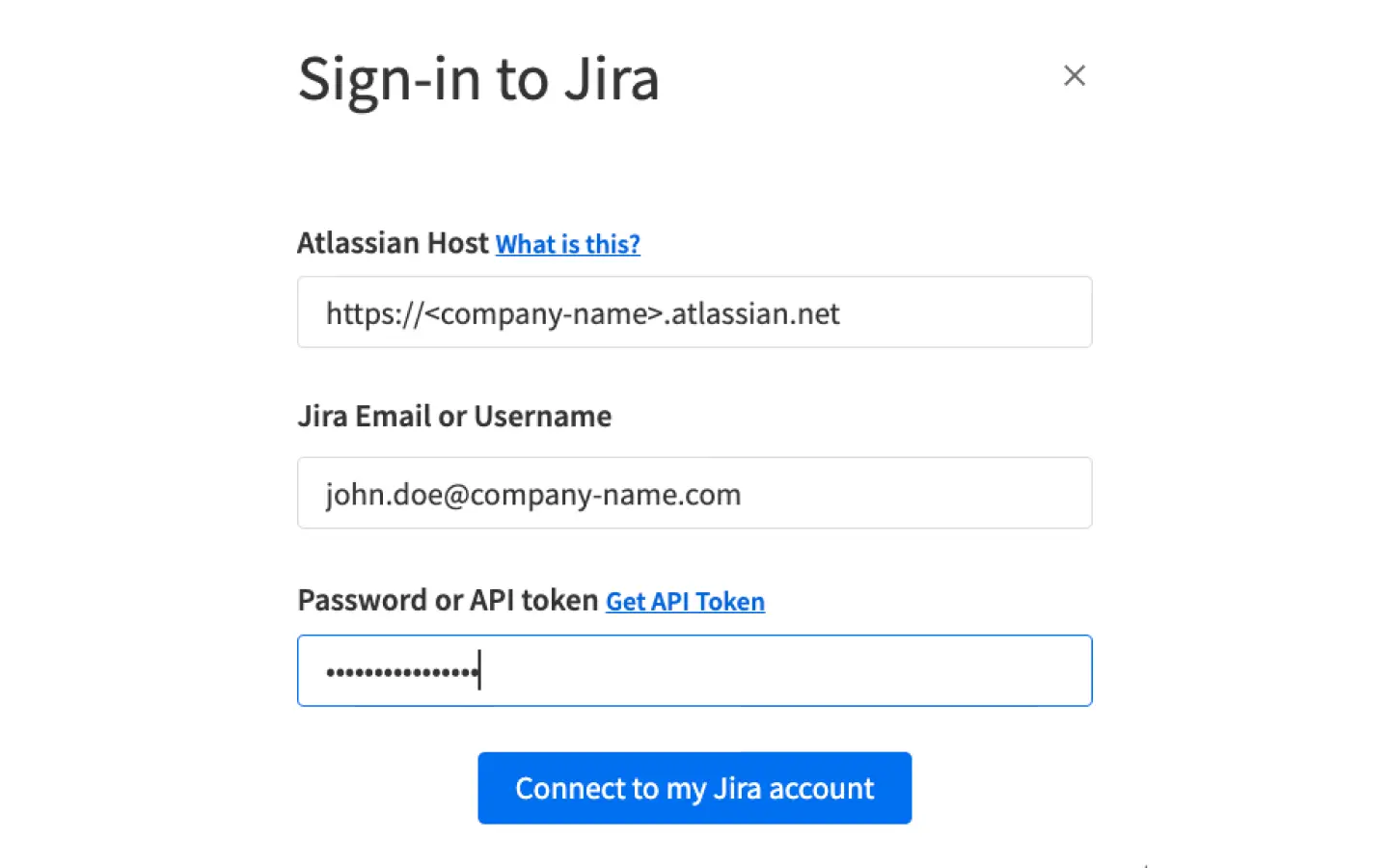
- Click Connect to my Jira account to integrate Jira with Test Reporting & Analytics.
Integrate Jira self hosted
Follow these steps to integrate Jira self hosted with Test Reporting & Analytics.
-
In the left navigation bar of Test Reporting & Analytics, click Integrations.

-
On the Integrations page, click Connect under the Jira Software logo.

-
Select Self Hosted from the dropdown menu.
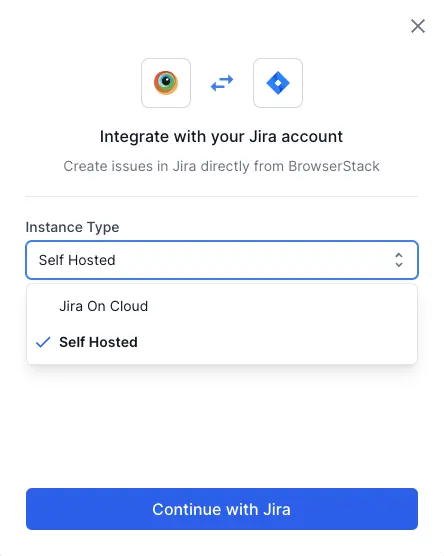
- Click Continue with Jira.
-
Enter your Atlassian host URL and API token to complete the integration.

- Click Continue.
After successful authentication, the Jira tile should indicate a connected status. Your Jira Self-Hosted instance is now integrated with the Test Reporting & Analytics, allowing you to create and track issues directly from the tool.
Report an issue on Jira
Ensure that you have integrated Jira with Test Reporting & Analytics.
- You can initiate a Jira bug in two ways:
- From the Tests tab of the Build Insights Dashboard, hover the cursor over the timeline graph of a failed test and click Report a bug.

- From the Timeline Debugging view, click the bug icon.
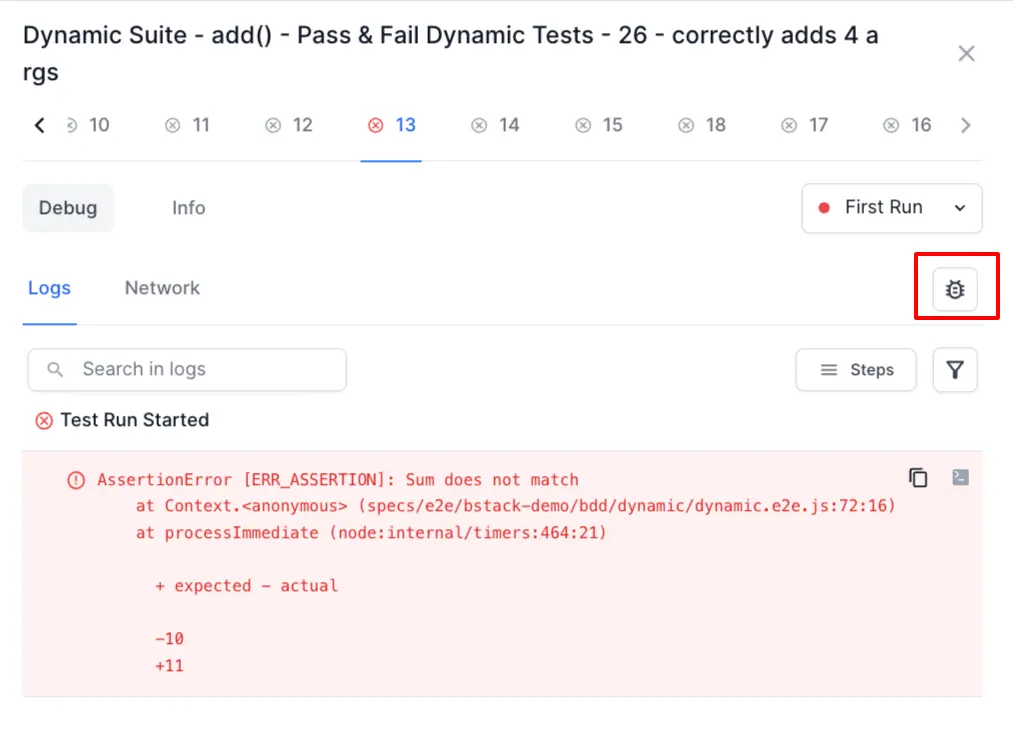
- From the Tests tab of the Build Insights Dashboard, hover the cursor over the timeline graph of a failed test and click Report a bug.
- Select a project from the Project drop-down menu in the window that appears. Test Reporting & Analytics automatically picks up all the fields in your Jira project.
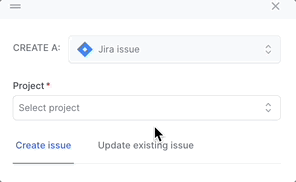
- Click the Create Issue tab and select the issue type.
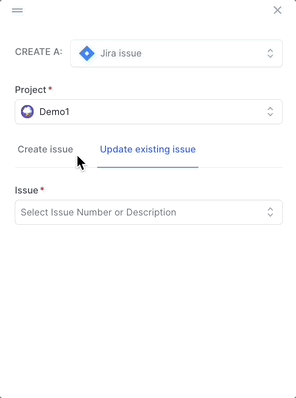
- Enter the details about the bug. Click Show all fields to view all the fields. Note that the fields in your Jira project are auto-populated here by Test Reporting & Analytics.
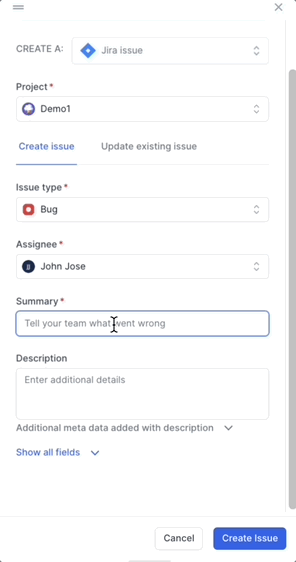
- Click Create Issue.

You will receive a success message that the Jira issue was created.

You can click View on the success message to view the bug on Jira.
The Jira bug gets associated with the test run. You can track the status of the Jira bug from the test listing.
Metadata to aid in debugging
When you report a Jira bug, Test Reporting & Analytics logs the following Metadata and other information to the Jira bug and makes debugging easier:
- Session URL to view the issue on BrowserStack
- Build Name
- Build ID
- CI Environment
- CI Build URL
- Test Name
- Test URL
- Test Status
- Operating System
- Browser name and version
- Host Name
- Defect Type
- Duration
-
isAutoAnalyzedflag - Status of Build Runs
- Error message or exception
- Environment
As Test Reporting & Analytics automatically logs this information onto the Jira bug, you can reduce manual work, debug faster, and improve the data quality of your Jira bugs.
Update an issue on Jira
Ensure that you have integrated Jira with Test Reporting & Analytics.
- You can open the window to update a Jira bug in two ways:
- From the Tests tab of Build Insights, hover the cursor over the timeline graph of a failed test and click Report a bug.

- From the Timeline Debugging view, click the bug icon.

- From the Tests tab of Build Insights, hover the cursor over the timeline graph of a failed test and click Report a bug.
- Select a project from the Project drop-down.

- Click the Update existing issue tab and select the bug which you want to update from the Issue drop-down.
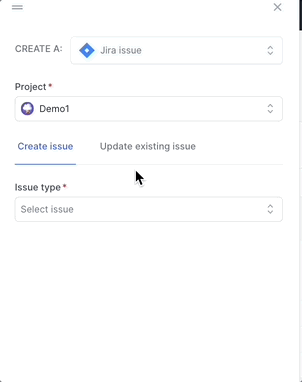
- Click Show all fields to view additional fields. Update the details about the bug.
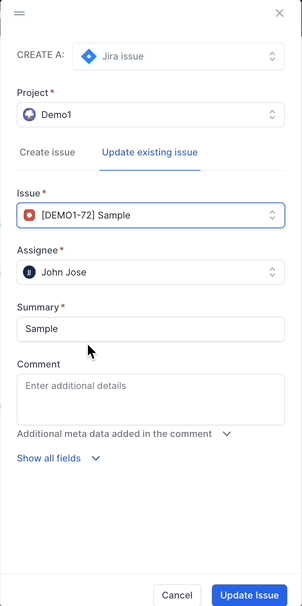
- Click Update Issue.

You will receive a success message that the Jira issue was updated.
We're sorry to hear that. Please share your feedback so we can do better
Contact our Support team for immediate help while we work on improving our docs.
We're continuously improving our docs. We'd love to know what you liked
We're sorry to hear that. Please share your feedback so we can do better
Contact our Support team for immediate help while we work on improving our docs.
We're continuously improving our docs. We'd love to know what you liked
Thank you for your valuable feedback!